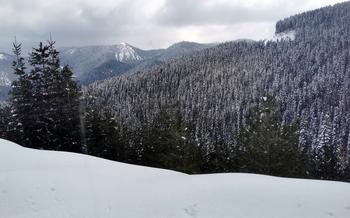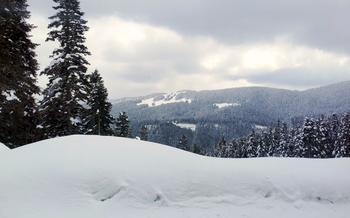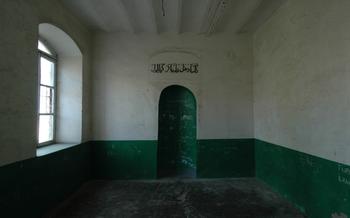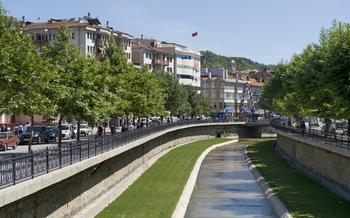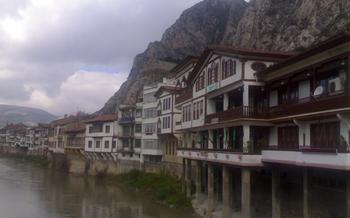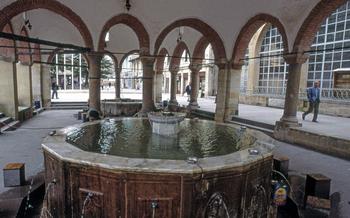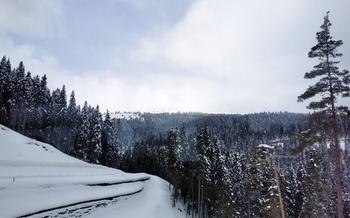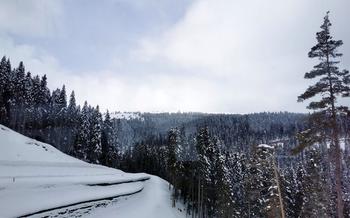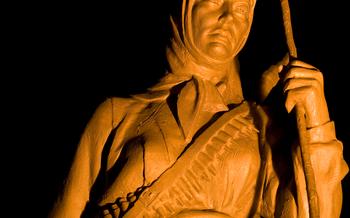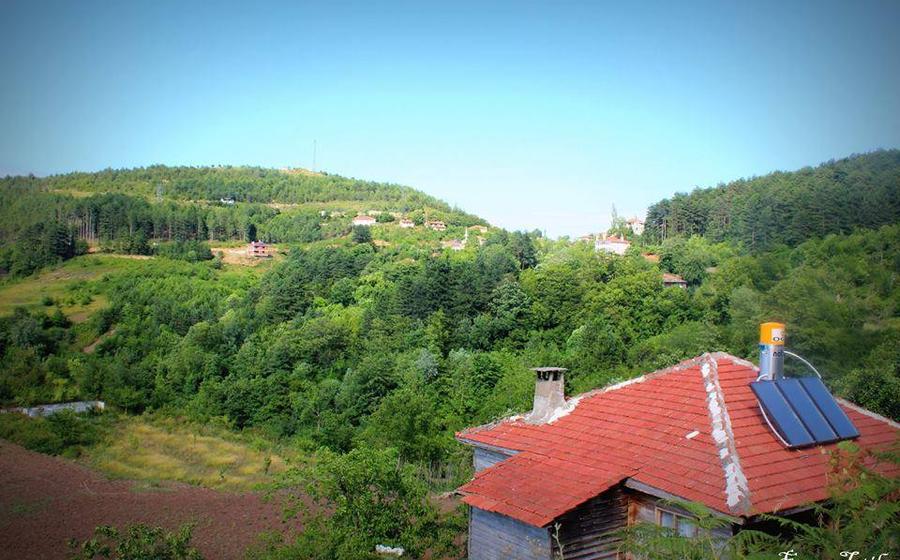
Kastamonu Rooster Rock Tombs
- History of the Kastamonu Rooster Rock Tombs
- Location and Accessibility
- Architectural Features
- Rock Reliefs and Inscriptions
- Legends and Folklore
- Nearby Attractions
- Tips for Visitors
- Photography and Videography
- Guided Tours
- Conservation Efforts
- Local Cuisine
- Souvenirs and Handicrafts
- Festivals and Events:
- Accommodation Options
- Insider Tip: Unveiling the Hidden Chamber
History of the Kastamonu Rooster Rock Tombs
The Kastamonu Rooster Rock Tombs, nestled in the heart of Kastamonu, Turkey, stand as evocative testaments to the region's rich past. Their origins can be traced back to the Paphlagonian Kingdom, an ancient civilization that flourished in the area during the 7th century BC. The tombs were carved into the sheer rock face of a hill, creating a captivating spectacle that has endured for centuries.
The significance of these tombs lies in their intricate rock reliefs and inscriptions, which offer valuable insights into the cultural and historical context of the Paphlagonian era. These artistic adornments showcase a blend of Anatolian and Hellenistic influences, reflecting the region's diverse heritage. The tombs served as eternal resting places for prominent figures of the Paphlagonian society, symbolizing their power and status.
One intriguing anecdote associated with the tombs is the legend of the "rooster rock." According to local folklore, a rooster perched atop the rock would crow at dawn, awakening the spirits of the deceased buried within. This tale adds an enchanting layer to the site's history, capturing the imagination of visitors and locals alike.
Location and Accessibility
The Kastamonu Rooster Rock Tombs are situated in the city of Kastamonu, a hidden gem nestled in Turkey's Black Sea region. To reach this ancient site, travelers can embark on a scenic journey through the picturesque Turkish countryside. The tombs are conveniently located within the city limits, making them easily accessible by various transportation options.
For those arriving by air, Kastamonu Airport (KZR) offers domestic flights connecting to major cities within Turkey. From the airport, visitors can take a short taxi ride or rent a car to reach the tombs. Kastamonu is also well-connected by road, with regular bus services operating from major cities like Ankara, Istanbul, and Samsun.
The tombs are accessible to visitors of all abilities. Well-maintained paths and ramps allow for easy navigation throughout the site, ensuring that everyone can experience the wonders of these ancient structures. Visitors are advised to plan their visit during the spring or autumn months to avoid the harsh summer heat and enjoy the pleasant weather conditions.
Architectural Features
The Kastamonu Rooster Rock Tombs stand out for their unique architectural style, showcasing a blend of Anatolian and Hellenistic influences. These rock-cut tombs feature a distinctive façade adorned with intricate carvings and reliefs. The entrances to the tombs are designed as monumental portals, resembling the gates of ancient cities.
Upon entering the tombs, visitors are greeted by spacious chambers adorned with rock-carved benches along the walls. These benches served as resting places for the deceased and their families during funerary rituals. The interiors of the tombs are characterized by vaulted ceilings supported by massive columns, creating an awe-inspiring atmosphere.
The construction of the tombs involved meticulous craftsmanship using locally sourced stone. The builders employed advanced techniques to cut and shape the rock, demonstrating their mastery in stone carving. The precision and attention to detail in the tombs' construction are a testament to the skill and artistry of the ancient craftsmen.
Look out for the unique architectural details that set these tombs apart. The entrances often feature elaborate pediments and cornices, while the interior walls may be adorned with niches and decorative moldings. These intricate embellishments add to the overall grandeur and beauty of the Rooster Rock Tombs.
Rock Reliefs and Inscriptions
The Rooster Rock Tombs are adorned with intricate rock reliefs and inscriptions that hold significant historical and cultural value. These reliefs depict a variety of subjects, including hunting scenes, mythological figures, and religious symbols. They offer a glimpse into the beliefs and practices of the ancient people who created these tombs.
One of the most notable reliefs is a depiction of a rooster, which is believed to be the origin of the tombs' name. The rooster is a symbol of fertility and resurrection in many cultures, and its presence here suggests that the tombs were associated with the afterlife.
Another striking relief shows a procession of figures carrying offerings. These figures are believed to be priests or mourners, and their presence suggests that the tombs were used for religious ceremonies and rituals.
The inscriptions found at the site are written in a variety of languages, including Greek, Latin, and Persian. They provide valuable historical information about the people who built the tombs and the period in which they were constructed.
Some of the inscriptions mention the names of the individuals buried in the tombs, while others record the dates of their construction. These inscriptions have helped scholars to piece together the history of the site and to better understand the culture of the people who created it.
Overall, the rock reliefs and inscriptions at the Rooster Rock Tombs provide a fascinating glimpse into the past. They are a testament to the artistic skill and cultural significance of the ancient people who built these tombs.
Legends and Folklore
The Kastamonu Rooster Rock Tombs are steeped in local legends and folklore that have captivated the imaginations of generations. One enduring tale speaks of hidden treasures buried beneath the tombs, guarded by ancient spirits who protect their secrets. Locals whisper of brave adventurers who dared to seek these treasures but were met with misfortune or disappeared without a trace.
Another legend tells of a cursed rooster that roams the site, its ghostly crow echoing through the night. According to the tale, the rooster was once a thief who attempted to steal from the tombs but was transformed into a bird as punishment. Its haunting presence is said to warn off would-be trespassers and protect the tombs from desecration.
Folk tales passed down through generations speak of the tombs as portals to other realms. It is said that on certain nights, the tombs emit a strange glow, inviting those who dare to step through and explore the mysteries that lie beyond. These stories have woven the Rooster Rock Tombs into the fabric of local culture, adding an air of mystery and enchantment to this ancient site.
Nearby Attractions
In addition to the Kastamonu Rooster Rock Tombs, the city of Kastamonu offers a wealth of other historical and cultural attractions. The Kastamonu Castle, perched atop a hill overlooking the city, is a must-visit for history enthusiasts. Constructed in the 12th century, it served as a strategic military stronghold for various empires throughout history. The castle offers breathtaking panoramic views of the city and the surrounding landscapes.
For those interested in religious architecture, the Nasrullah Mosque, built in the 14th century, is a prime example of Seljuk architecture. Its intricate stone carvings and impressive dome make it an architectural masterpiece. The Koprulu Mehmet Pasha Mosque, constructed in the 17th century, is another architectural gem showcasing Ottoman influence, featuring an elegant dome and minarets.
Kastamonu is also home to several museums that provide insights into the region's rich history and culture. The Kastamonu Museum houses a diverse collection of artifacts, including archaeological findings from the Rooster Rock Tombs, ethnographic objects, and traditional handicrafts. The Ethnography Museum showcases the local lifestyle and traditions, offering a glimpse into the daily lives of Kastamonu's people.
Nature lovers will find solace in the nearby Ilgaz Mountain National Park, renowned for its stunning landscapes, lush forests, and diverse wildlife. Visitors can embark on scenic hiking trails, encounter various animal species, and enjoy breathtaking views from the mountain peaks.
Creating a comprehensive itinerary that combines visits to the Kastamonu Rooster Rock Tombs and these nearby attractions will provide a well-rounded experience, allowing travelers to delve into the historical, cultural, and natural wonders of Kastamonu.
Tips for Visitors
Exploring the Kastamonu Rooster Rock Tombs requires proper preparation and etiquette to ensure a safe and respectful visit. Firstly, comfortable attire and sturdy footwear are essential for navigating the uneven terrain. Visitors should carry sufficient water, sunscreen, and a hat to protect themselves from the sun, as there is limited shade at the site. Safety precautions include being mindful of uneven surfaces and following designated paths to avoid potential hazards. Additionally, visitors should maintain a respectful demeanor, avoiding loud noises or disruptive behavior, as the tombs hold cultural and historical significance.
Photography and Videography
The Kastamonu Rooster Rock Tombs present a photographer's paradise, with their intricate carvings and stunning natural backdrop. Capture the essence of these ancient monuments by following these tips:
-
Prepare Your Gear: Equip your camera with a wide-angle lens to capture the tombs' grandeur and a telephoto lens for close-ups of the reliefs. A tripod will ensure sharp images, especially in low-light conditions.
-
Choose the Right Lighting: Aim to visit during the golden hours (sunrise and sunset) to take advantage of the warm, diffused light that accentuates the tombs' textures and carvings.
-
Compose Your Shots: Experiment with different angles and perspectives to create dynamic compositions. Capture the tombs against the backdrop of the lush green hills or the dramatic cliffs.
-
Respect the Site: While photography is encouraged, remember to be respectful of the site's sanctity and avoid using flash or tripods that might obstruct other visitors' views.
-
Consider Videography: If you're into videography, bring your equipment to capture the tombs' immersive atmosphere. Create a time-lapse of the changing light or a short film showcasing the site's history and significance.
Guided Tours
Exploring the Kastamonu Rooster Rock Tombs with a knowledgeable guide can greatly enhance your understanding and appreciation of the site. Guided tours are available on-site, and booking in advance is recommended, especially during peak tourist season. Choose a reputable tour operator or licensed guide who can provide historical context, explain the significance of the rock reliefs and inscriptions, and answer your questions.
Guided tours typically cover the history, architecture, and cultural significance of the tombs. Guides can point out specific details and features that you might miss on your own, such as hidden symbols or inscriptions. They can also share local legends and folklore associated with the tombs, making your visit more immersive and memorable.
Opting for a guided tour allows you to learn more about the historical and cultural context of the tombs, gaining a deeper understanding of their importance. Guides can provide insights into the lives of the ancient people who built and used these tombs, as well as the cultural and religious practices of the region during that time.
Conservation Efforts
Preserving the Kastamonu Rooster Rock Tombs for future generations is crucial. These significant historical landmarks face several challenges, including environmental factors like erosion and weathering. Human activities such as vandalism and neglect also pose a threat to their integrity.
To address these challenges, conservation efforts are underway, involving both local and international organizations. Regular maintenance and restoration work are carried out to stabilize the structures and prevent further deterioration.
Visitors play a vital role in contributing to conservation efforts. By adhering to guidelines, avoiding touching or damaging the tombs, and respecting the site's sanctity, they can help preserve this precious heritage.
Ongoing projects and initiatives aim to enhance the tombs' protection. These include research and documentation initiatives to deepen our understanding of their history and significance. Furthermore, educational programs raise awareness among local communities and visitors about the importance of safeguarding these unique monuments.
Through collective efforts, we can ensure that the Kastamonu Rooster Rock Tombs continue to stand as a testament to the region's rich history and cultural heritage, inspiring wonder and appreciation for generations to come.
Local Cuisine
Kastamonu's culinary delights await visitors with a rich blend of flavors and traditional dishes.
Gastronomic Treasures of Kastamonu: - Indulge in the region's signature dish, "Kastamonu Mantısı," delicate dumplings topped with yogurt, garlic sauce, and crispy butter. - Savor "Ilgaz Tandır Kebabı," a succulent lamb dish cooked in a traditional clay oven, renowned for its smoky aroma and tender texture. - Treat your sweet tooth with "Kastamonu Ekmeği," a delectable pastry filled with walnuts and honey, a local favorite enjoyed with tea.
Culinary Adventures near the Tombs: - Discover hidden culinary gems within walking distance of the Rooster Rock Tombs. - Experience authentic Turkish coffee at a charming nearby café, immersing yourself in the local coffee culture. - Enjoy a traditional Turkish breakfast at a local eatery, savoring fresh cheeses, olives, and homemade jams.
Tips for Food Explorers: - Embrace the local dining experience by venturing into small, family-run restaurants for a taste of home-style cooking. - Ask locals for recommendations on hidden culinary spots known only to insiders. - Don't be afraid to try new flavors and dishes; Kastamonu's cuisine is a delightful journey for the taste buds.
Souvenirs to Savor: - Take home a taste of Kastamonu with local delicacies like honey, jams, and traditional sweets, available at local markets and shops. - Support local farmers and artisans by purchasing their fresh produce and handmade products, contributing to the preservation of local culinary traditions.
Souvenirs and Handicrafts
The Rooster Rock Tombs are a treasure trove of cultural heritage, and visitors can take home a piece of this history through locally crafted souvenirs and handicrafts. Strolling through the streets of Kastamonu, you'll find an array of shops and artisans showcasing their creations inspired by the tombs.
From intricate replicas of the rock reliefs carved into delicate jewelry to handwoven textiles featuring motifs reminiscent of the tombs' designs, there's a souvenir for every taste and budget. For those seeking a truly unique memento, consider commissioning a custom-made piece from a local artisan.
When bargaining for souvenirs, remember to do so respectfully and politely. Locals appreciate fair prices, and you might even strike up a friendly conversation while negotiating.
To ensure your souvenirs make it home safely, pack them carefully and consider using protective materials like bubble wrap or foam. This will prevent damage during your travels and preserve your cherished memories of Kastamonu.
Festivals and Events:
The Kastamonu Rooster Rock Tombs serve as a backdrop for various local festivals and cultural events that celebrate the region's rich heritage. One of the most notable events is the annual Rooster Rock Festival, held during the summer months. This lively festival showcases traditional folk dances, music, and local cuisine, attracting visitors from near and far. During the festival, the tombs come alive with vibrant performances, colorful costumes, and infectious energy, offering a unique opportunity to immerse in the local culture and traditions.
Another significant event is the Kastamonu International Sculpture Symposium, held biennially. During this symposium, renowned sculptors from around the world gather to create stunning works of art inspired by the Rooster Rock Tombs and the surrounding landscape. The resulting sculptures are displayed throughout the city, adding an artistic dimension to the historical site.
For those interested in delving deeper into the region's history and culture, the Kastamonu History and Culture Festival offers a diverse program of exhibitions, conferences, workshops, and guided tours. This festival provides an excellent platform to learn about the significance of the Rooster Rock Tombs and their connection to the rich tapestry of Kastamonu's past.
Whether you're seeking vibrant celebrations, artistic expressions, or historical insights, the festivals and events held near the Kastamonu Rooster Rock Tombs offer a unique opportunity to experience the region's cultural treasures and create lasting memories.
Accommodation Options
When planning your stay in Kastamonu, you'll find a range of accommodation options to suit your needs and budget. From cozy guesthouses to comfortable hotels, there are plenty of choices within easy reach of the Rooster Rock Tombs.
For budget-conscious travelers, guesthouses and hostels offer a more affordable option without compromising on comfort. These establishments often have a warm, welcoming atmosphere and provide a great opportunity to meet fellow travelers and share experiences.
If you prefer a more upscale experience, several hotels in Kastamonu offer modern amenities and convenient locations. These hotels often feature stylish rooms, on-site dining options, and stunning views of the city or surrounding countryside.
To immerse yourself in local culture, consider staying in a traditional Turkish house. These charming accommodations provide a unique glimpse into Turkish hospitality and offer a more authentic experience.
No matter your preference, it's advisable to book your accommodation in advance, especially during the peak tourist season. This will ensure you secure a comfortable place to stay and avoid any last-minute surprises.
Insider Tip: Unveiling the Hidden Chamber
Beyond the main chamber of the Rooster Rock Tombs lies a hidden gem—a secret chamber that few visitors know about. To uncover this hidden treasure, look for an inconspicuous crevice in the rock wall near the back of the main chamber. With a flashlight in hand, carefully navigate through the narrow passageway, and you'll be rewarded with a breathtaking sight. The hidden chamber is adorned with intricate carvings and inscriptions that offer a glimpse into the lives and beliefs of the ancient people who created these magnificent tombs. It's an experience that will leave you in awe and wonder, making your visit to the Kastamonu Rooster Rock Tombs truly unforgettable.
